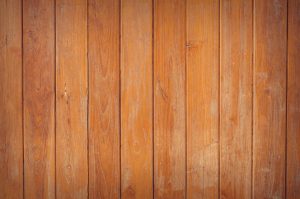Residential Roofing Safety Standards 2024: New OSHA Requirements and How Professional Contractors Comply
Residential Roofing Safety Standards 2024: Critical OSHA Requirements Every Homeowner Should Know When Hiring Professional Contractors
When it comes to residential roofing projects, safety isn’t just the contractor’s responsibility—it’s a shared commitment that protects workers, homeowners, and the community. Understanding the latest OSHA safety standards for 2024 helps homeowners make informed decisions when selecting roofing contractors and ensures their projects meet the highest safety requirements.
Understanding OSHA’s Residential Roofing Safety Framework
The Occupational Safety and Health Administration (OSHA) maintains specific safety standards for residential roofing work that differ from commercial construction requirements. OSHA’s “Subpart M” intended to standardize fall protection for the construction industry, but did not clearly define how those standards would apply to residential construction. At the request of industry associations, OSHA reconsidered the code and published an interim policy in December of 1995 which is considered to comply with Subpart M during residential roofing work where (1) the roof slope is 8-in-12 or less and (2) fall potential from lower eaves is 25 feet or less.
These regulations are particularly important because the leading cause of fatalities in the entire construction industry is falls. According to OSHA, falls accounted for 3,500 fatalities between 2003 and 2013. Of those 3,500 fatalities, 34% (or 1,200 fatalities) were the result of falls from roofs.
Key Fall Protection Requirements for 2024
Professional roofing contractors must implement comprehensive fall protection systems based on specific project parameters. OSHA’s fall protection standard is one of the most critical OSHA roofing requirements. It requires employers to provide fall protection systems for workers who are working at heights of 6 feet or more above lower levels. This can include the use of guardrails, safety nets, or personal fall arrest systems (PFAS) such as harnesses and lanyards.
For residential projects, contractors have several options depending on roof characteristics:
- Alternative Fall Protection Methods: Available for residential roofing work where (1) the roof slope is 8-in-12 or less and (2) fall potential from lower eaves is 25 feet or less
- Conventional Fall Protection: Required on roofs of 8-in-12 or greater, and on roofs with slopes greater than 4-in-12 where the fall potential measured from eaves is greater than 25 feet. Conventional methods include safety nets, guardrails or a personal fall arrest system.
- Safety Monitor Systems: Permitted under specific conditions with proper training and implementation
Personal Protective Equipment (PPE) Standards
OSHA mandates specific personal protective equipment for all roofing work. Personal Protective Equipment (PPE) is the first line of defense against potential roofing hazards. OSHA mandates the use of specific PPE to safeguard roofers during construction activities. This includes at a minimum hard hats, eye protection, hearing protection, gloves, and non-slip footwear to safeguard against potential hazards.
Additionally, if roofers are exposed to airborne contaminants, such as dust or fumes, respiratory protection may be required. OSHA’s respiratory protection standards outline the requirements for proper respiratory equipment and use.
Training and Certification Requirements
Professional contractors must ensure their workers receive comprehensive safety training. Section 1926.503(c) of the OSHA standards stipulates that all employees exposed to fall hazards should get the necessary protection training from their employers. Once the employers are confident that the employees are thoroughly trained, they should verify compliance by preparing a written certification record.
For residential roofing specifically, STD 3-0.1A requires that “[o]nly workers who have been trained to be proficient in the alternative methods of fall protection shall be allowed onto the roof. In addition, each affected employee shall be trained to ensure specific awareness of the fall hazards associated with work on roofs with rake edges (“rake edges” are inclined roof edges, such as those on the gable end of a building.)” This training requirement is in addition to general construction-training requirements.
How Professional Contractors Like Bay Area Exteriors Ensure Compliance
When selecting a residential roofing contractor, it’s essential to choose one that prioritizes safety compliance. Bay Area Exteriors, serving Talbot County, Maryland, exemplifies how professional contractors implement OSHA standards effectively. They are a prestigious Master Elite GAF Roofing Installer, ranking among the top 2% of roofing contractors with a commitment to quality and professionalism. Their certification guarantees they meet strict requirements, including proper licensing, insurance, a proven reputation, and ongoing professional training.
The company’s approach to safety reflects OSHA’s emphasis on comprehensive protection. When you choose Bay Area Exteriors as your contractor for any job, you will Find that Honesty, Integrity, Communication and Quality of workmanship is at the forefront of everything we do. They pride themselves in these values and it will show in their interactions with every customer.
Weather-Related Safety Considerations
OSHA requires contractors to monitor environmental conditions carefully. Employees are required to monitor the weather conditions and consider stopping roof construction if the current conditions make the roof unsafe. Some hazardous weather conditions that may warrant suspending roof construction include rain, wind, and snow, making roofs slippery. Extreme heat can also make workers suffer dehydration. When it’s freezing outside, workers can become clumsy due to numbed feet and hands. The OSHA regulations stipulate that employers should ensure that workers are only working when the weather is conducive.
Ladder Safety and Access Requirements
Proper ladder safety is crucial for residential roofing projects. OSHA has specific requirements for ladder safety on roofs. These requirements include: Ladders must be fully extended and secured at the top and bottom. Ladders must be placed on a stable and level surface that is free of debris. Ladders must be at least 3 feet away from the edge of the roof.
What Homeowners Should Look For
When hiring a roofing contractor, homeowners should verify that the company:
- Maintains proper OSHA training certifications for all workers
- Carries appropriate insurance and licensing (Bay Area Exteriors holds Maryland Home Improvement Commission license #140145)
- Implements project-specific safety plans based on roof characteristics
- Uses compliant fall protection systems and PPE
- Has a proven track record of safety compliance
The Bottom Line: Safety as a Shared Responsibility
OSHA’s 2024 residential roofing safety standards represent decades of refinement aimed at protecting workers and ensuring quality outcomes. These statutory rules and regulations were meant to help create a better working environment for all individuals. And while the standards are updated each year, the ultimate goal is to ensure that roofs remain a safe and secure place for workers and everyone else.
For homeowners in Maryland’s Eastern Shore region, working with established contractors like Bay Area Exteriors ensures that your roofing project meets or exceeds all current OSHA requirements. With over 30 years of experience servicing homeowners, Bay Area Exteriors is here to handle all of your roofing needs. Their roofing experts bring decades of experience in performing to every job they do. Whether it’s an entire re-roof, a minor repair, a thorough inspection, annual maintenance, or a new construction project, their crews will get the job done right and on time.
By understanding these safety standards and choosing contractors who prioritize compliance, homeowners can ensure their roofing projects protect both the workers performing the job and the long-term integrity of their investment.


